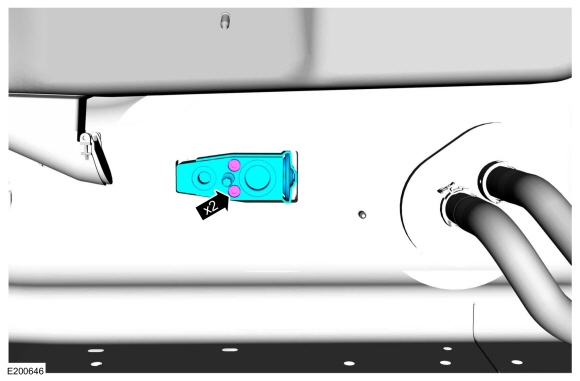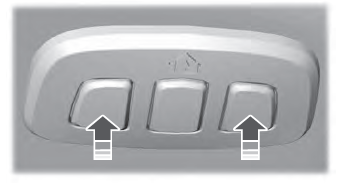Lincoln Nautilus: Climate Control System - General Information / Thermostatic Expansion Valve - 2.0L EcoBoost (184kW/250PS) – MI4. Removal and Installation
Lincoln Nautilus 2018-2025 Service Manual / Electrical / Climate Control System / Climate Control System - General Information / Thermostatic Expansion Valve - 2.0L EcoBoost (184kW/250PS) – MI4. Removal and Installation
Removal
NOTICE: During the removal of components, cap, tape or otherwise appropriately protect all openings to prevent the ingress of dirt or other contamination. Remove protective materials prior to installation.
NOTE: Removal steps in this procedure may contain installation details.
-
Recover the refrigerant. Refer to the appropriate Recovery procedure in Group 412.
-
Remove the evaporator inlet and outlet manifold bracket nut.
Torque: 18 lb.in (2 Nm)
.jpg) |
-
Remove the air cleaner outlet pipe.
Refer to: Air Cleaner Outlet Pipe (303-12 Intake Air Distribution and Filtering - 2.0L EcoBoost (184kW/250PS) - MI4) .
-
Remove the nut and position aside the evaporator inlet and outlet manifold.
-
Make sure to cover any open ports to prevent debris from entering the system.
Torque: 159 lb.in (18 Nm)
-
Make sure to cover any open ports to prevent debris from entering the system.
.jpg) |
-
Remove the bolts and the thermostatic expansion valve.
-
Make sure to cover any open ports to prevent debris from entering the system.
Torque: 71 lb.in (8 Nm)
-
Make sure to cover any open ports to prevent debris from entering the system.
 |
Installation
-
To install, reverse the removal procedure.
-
NOTICE: Only use the specified material to lubricate the seals.
Install and lubricate new O-ring seals. Refer to the appropriate Specifications in Group 412.
-
Lubricate the refrigerant system with the correct amount
of clean PAG oil. Refer to the appropriate Refrigerant Oil Adding
procedure in Group 412.
 Sunload Sensor. Removal and Installation
Sunload Sensor. Removal and Installation
Removal
Remove the sunload sesnor.
Disconnect the electrical connector.
Installation
To install, reverse the removal procedure...
Other information:
Lincoln Nautilus 2018-2025 Service Manual: Direct Current/Alternating Current (DC/AC) Inverter. Removal and Installation
Removal WARNING: Disconnect the 12 volt battery before servicing the direct current to alternating current (DC-AC) inverter or alternating current (AC) powerpoint to prevent the risk of high voltage shock. Failure to follow this instruction may result in serious personal injury. Raise and position the passenger front seat rearward. Disconnect..
Lincoln Nautilus 2018-2025 Owners Manual: Auto Mode
Switching Auto Mode On and Off Press the button to switch auto mode on. Repeatedly press the button to adjust auto mode. The system adjusts the blower motor speed, air distribution, air conditioning operation, and outside or recirculated air to reach and maintain the temperature you have set. Adjust the blower motor control to switch auto mode off. Note: The system starts at the previous s..
Categories
- Manuals Home
- 1st Generation Nautilus Owners Manual
- 1st Generation Nautilus Service Manual
- Engine Oil Capacity and Specification - 2.0L
- Refueling
- Programming the Garage Door Opener to Your Garage Door Opener Motor
- New on site
- Most important about car
Clearing the Garage Door Opener. Reprogramming the Garage Door Opener. Garage Door Opener Radio Frequencies
Clearing the Garage Door Opener

Copyright © 2025 www.linautilus.com

